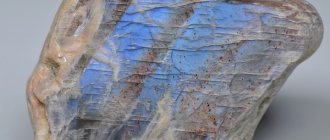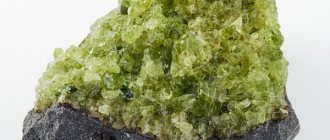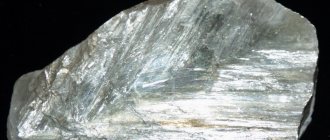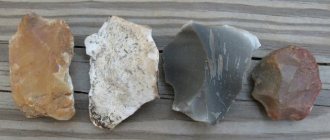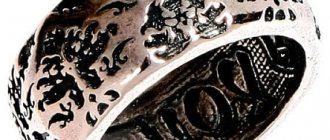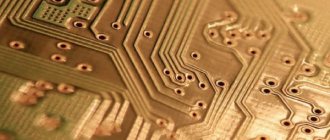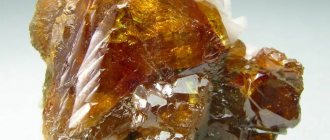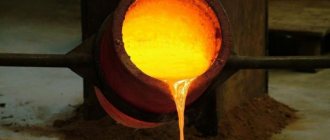Recently, one can increasingly hear the question of where palladium is used and how to extract it. This is not at all accidental, because its value and nobility play an important role. Many people want to acquire this expensive metal for various reasons, but not everyone succeeds. It is difficult to accidentally discover palladium just walking along the road, although this may well happen to the lucky ones.
The article will tell you about the properties and uses of palladium, as well as its current prices. The information will be of particular interest to connoisseurs of precious metals. Even though active mining of this element began not so long ago, its popularity has already grown quite well.
Properties
Before we talk about where palladium is used, it is worth knowing why it has become so relevant today. In fact, this was facilitated not only by its noble origin, but also by its incredible properties, of which this metal has quite a few.
In science, there are three main groups of properties: physical, chemical and biological. These are the ones that need to be considered separately. This will give you a broader understanding of what the element in question is.
Chemical properties of palladium:
| 300 | Chemical properties | |
| 301 | Oxidation states | 0, +1, +2, +3, +4, +5, +6 |
| 302 | Valence | II, IV |
| 303 | Electronegativity | 2.20 (Pauling scale) |
| 304 | Ionization energy (first electron) | 804.38 kJ/mol (8.336839(10) eV) |
| 305 | Electrode potential | Pd2+ + 2e— → Pd, Eo = +0.987 V |
| 306 | Electron affinity energy of an atom | 53.7 kJ/mol |
Physical
Speaking about where palladium is used and where it came from in the first place, it is worth mentioning an English chemist named William Wollaston. It was he who received this metal back in 1803. And the name of this element was given in honor of the asteroid Pallas, which became known to the world shortly before this metal was discovered in the laboratory. In those days, it was difficult for people to find a purpose for a new element, so it had to lie idle for a certain period of time.
Palladium itself has a silvery-white hue. As for its appearance, it resembles ordinary silver. The following physical properties were discovered for this element:
- boiling point – 2,940 °C;
- density – 12.0 g/cm3;
- elastic modulus – 12,600 kgf/mm2;
- melting point – 1554 °C;
- Brinell hardness – 52 kgf/mm2.
It is also worth noting that even today the metal in question is recognized as one of the rarest on the planet. On the entire earth it is present only 0.000001%.
Another interesting ability of the element is the change in its structure starting from heating from 18 °C. And with a further increase in this indicator, the changes become irreversible.
Scientists add platinum group elements to palladium. Due to this, they manage to significantly improve the properties of the precious metal. For example, when ruthenium and rhodium are added, the chemical element becomes twice as strong and elastic.
Palladium crystal lattice:
| 500 | Crystal cell | |
| 511 | Crystal grid #1 | |
| 512 | Lattice structure | Cubic face centered |
| 513 | Lattice parameters | a = 3.890 Å |
| 514 | c/a ratio | |
| 515 | Debye temperature | 274 K |
| 516 | Name of space symmetry group | Fm_3m |
| 517 | Symmetry space group number | 225 |
Chemical
The active use of palladium in various fields of activity is also explained by its chemical properties. First of all, it should be noted that it has a fairly high inertness, as well as galvanic resistance, which is extremely rare among modern metals. Such properties are explained by the atomic structure of the element. It is also worth saying that it does not interact in any way with acids, water molecules and alkalis, so it will not be possible to carry out the simplest school experiments on it, although hardly anyone will agree to get it for such purposes.
If you heat the metal to 350 degrees, its resistance will remain stable. But as this indicator increases, it will begin to oxidize. As a result of this reaction, a dull oxide film is formed on the metal surface. If you heat it to 850 degrees, you can observe its disintegration. This phenomenon is explained by the fact that in the temperature range from 800 to 850 degrees the element is already resistant to oxidation and does not succumb to it.
Not long ago, scientists discovered one interesting fact. Its essence is that a solution of nitric acid can make a pure titanium plate thinner by 19 mm per year, and in the case of an alloy of palladium with the same titanium, thinning will occur much more slowly - only 0.10 mm per year.
Heating up to 500 degrees, the element successfully interacts with various oxidizing agents, including fluorine. Thanks to this, scientists have been able to conduct a lot of research.
An additional chemical property of palladium is its ability to enhance the anti-corrosion capabilities of titanium. When a precious metal is added to this element, its resistance to aggressive environments increases significantly.
Being in nature
One of the rarest elements in the earth's crust; its clarke number is 1·10−6%. It is found in native form (allopalladium), in the form of intermetallic minerals (palladium platinum, stannopalladinite Pd3Sn2, etc.) and other compounds (palladite PdO, braggite (Pd, Pt, Ni)S, etc.). About 30 palladium minerals are known. Accompanies other platinum metals, its content in the mixture of platinum group metals in various deposits ranges from 25 to 60%. According to the Holschmidt geochemical classification of elements, like all platinoids, it belongs to the siderophiles, that is, it has an affinity for iron and is concentrated in the Earth’s core. Currently, the largest (not developed) palladium deposit in Russia is located in the Murmansk region (Fedorovo-Pansky intrusive massif).
Receipt
Palladium is obtained mainly from the processing of sulfide ores of nickel, silver and copper. Some of the world's production (about 10%) is recovered from recycled materials.
From a solution of a mixture of noble metals in aqua regia after the precipitation of gold and platinum, dichlorodiammine palladium Pd(NH3)2Cl2 is precipitated, purified by recrystallization from an ammonia solution of HCl, decomposed to powdered palladium by calcination in a reducing atmosphere, and the palladium powder is melted down.
By reducing solutions of palladium salts, palladium black is obtained - finely crystalline palladium powder.
Compact metal palladium is also obtained by electrodeposition from nitrite and phosphate acid electrolytes, for example, using Na2[Pd(NO2)4].
Production figures
Main palladium mining areas
The largest palladium deposit is located in Russia (Norilsk, Talnakh). Deposits are also known in the Transvaal (Africa), Canada, Alaska, Australia, and Colombia.
Supplies of palladium in the world in 2007 amounted to 267 tons (including Russia - 141 tons, South Africa - 86 tons, USA and Canada - 31 tons, other countries - 9 tons). Palladium consumption in 2007 was 107 tons in the automotive industry, 40 tons in the electronics industry, and 12 tons in the chemical industry.
According to the London research company GFMS, in 2009 the Russian Federation sold approximately 1.1 million ounces of palladium, in 2010-800 thousand ounces, in 2011 the export volume will be similar.
Where is palladium mined?
Today it is worth thanking for the use of palladium in Russia. It is she who holds the first place in the production of this precious metal. The holding produces about 41% of palladium raw materials around the globe. The main deposits are located on the Taimyr Peninsula, which is located in the Arctic. There are copper-nickel deposits there, where activities are being carried out to extract the precious element.
South Africa is considered the second country in terms of palladium production. There are deposits here that provide about 38% of the world's metal production.
The remaining share, which is 21%, is divided into several fields located in the following countries:
- Canada – 9%;
- Zimbabwe – 3%;
- North America – 6%;
- Colombia, Australia and others (together) – 3%.
Where is palladium used?
Areas of application:
- Hydrogen technologies. Membranes that are needed to produce ultrapure hydrogen are made from this metal.
- Medicine. Medical instruments, dentures, pacemakers, and cytostatic drugs are made from palladium.
- Production of chemical glassware, parts for the assembly of high-precision measuring instruments.
- Manufacturing of precision mechanical tools.
- Production of chemical equipment used to produce hydrofluoric acid.
- Manufacturing of electrical contacts, ceramic capacitors.
- Palladium chloride is used in electroplating.
- The use of metal as a catalyst in scientific experiments. Its chloride is needed to detect the presence of small amounts of carbon monoxide in the air.
- In jewelry, palladium is an alloying component for the production of white gold. You can also find jewelry on sale in which this precious metal is the main component. It is often combined with silver in a ratio of 50x50 and with platinum in a ratio of 85 to 15.
Since palladium is a precious metal, it is used as a currency when trading on over-the-counter, exchange markets. In many countries, you can open a “metal” bank account in which this metal will be stored.
Palladium ring (Photo: Instagram / asyaair)
Importance in Jewelry
The use of palladium in the jewelry industry is especially important, since products with its participation are quite attractive and delight the eye not only of beautiful ladies, but also of the opposite sex. As a rule, the metal in question is used as an independent decoration, but sometimes acts as an addition to items made of silver and gold. It is not customary to combine it with other precious metals. In addition, products with his direct participation are almost never complemented with valuable stones.
Palladium in the automotive industry
The use of palladium in industry, or more precisely in the automotive industry, is not so widespread. Only catalysts are manufactured with his participation. Although for several years now scientists have been thinking about where else this element can be applied in this area.
Recent statistics indicate that in recent years the amount of palladium used in the automotive industry has decreased by approximately three times. Although at the same time its production was increased by more than 25%. The reason for such phenomena lies in the cost of metal - it grows along with the needs of the automotive industry.
Other Applications
Where is palladium used in industry? The list of industries provided above is not exhaustive. Such a precious element is also actively used in the following areas:
- Electrical and electronic. Here, the metal in question takes an active part in the creation of thermostats, capacitors, thermocouples, and electrical connectors. All this with the participation of the element in question began to happen not so long ago. The technology gained popularity quite quickly, so there are no plans in this direction for now regarding the elimination of palladium altogether or the addition of new products based on it.
- Chemical. Workers in this industry actively use the element as a catalyst, that is, a special accelerator for certain reactions. Unfortunately, it does not interact with all elements of the periodic table, but this does not prevent the development of new reactions with its direct participation.
- Investment. Oddly enough, palladium has found beneficial use here too. Valuable coins are minted from it and used for financial investments.
- Food. The element in question can also be found here. It is sometimes used to create tableware elements. This is ensured by the well-known fact that the precious metal is chemically neutral. At the same time, the products manufactured with his participation are practically no different from ordinary ones, but their price is an order of magnitude higher.
Palladium
Palladium is a chemical element, metal. Atomic number – 46. Atomic mass – 106.42(1) amu. Denoted by the symbol Pd (from the Latin Palladium).
The element belongs to the transition metals and noble metals of the platinum group (light platinoids). Palladium is the lightest element of the platinum group, one of the four precious metals that can be hallmarked.
The simple substance palladium under normal conditions is a ductile metal of silvery-white color.
The metal is named after the asteroid Pallas, discovered by the German astronomer Olbers in 1802, shortly before the discovery of palladium. In turn, the asteroid is named after Pallas Athena from ancient Greek mythology. Palladium or Palladium is a legendary wooden image of Pallas Athena that fell from the sky. According to the prophecy of Helen (son of Priam), Troy will remain indestructible as long as this talisman is kept within its walls. According to legend, Troy fell only after Odysseus and Diomedes stole Palladium during a night raid.
Physical properties Palladium is a transition metal. Under normal conditions, it forms crystals of silvery-white color of cubic system, space group Fm3m, cell parameters a = 0.38902 nm, Z = 4, structural type of copper.
Palladium is plastic; microadditives of nickel, cobalt, rhodium or ruthenium improve the mechanical properties of Pd and increase hardness.
Insoluble in water. Density - 12.02 (20°C, g/cm³); under special conditions it forms colloidal palladium and palladium black. Melting point is 1554°C, boiling point is about 2940°C. The heat of fusion is 16.7 kJ/mol, the heat of evaporation is 353 kJ/mol. Specific heat capacity at 20°C - 25.8 J/(mol K), electrical resistivity at 25°C - 9.96 μOhm/cm; thermal conductivity - 75.3 W/(m K). Vickers hardness 37...39. Brinell hardness 52 kgf/mm².
Temperature coefficient of linear expansion 1.17·10−5 K−1 (in the range of 0...100°C).
The surface tension coefficient of liquid palladium at the melting point is 0.015 N/cm.
Palladium is paramagnetic; its magnetic susceptibility is +5.231·10−6 (at +20°C).
Actively absorbs hydrogen, forming solid solutions (up to 900 volumes of hydrogen per volume of Pd), while the lattice constant increases. Hydrogen is removed from palladium by heating to 100°C in a vacuum.
Chemical properties Palladium is the most chemically active of the platinum metals. At room temperature, palladium reacts with aqua regia and wet chlorine and bromine. Reacts with hot concentrated sulfuric and nitric acids, unlike other platinum metals. It can be brought into solution by anodic dissolution in hydrochloric acid. When heated, it reacts with fluorine, sulfur, selenium, tellurium, arsenic and silicon. It oxidizes when fused with potassium hydrogen sulfate, and also interacts with molten sodium peroxide. When heated in air, it is stable up to ~300°C and above 850°C. In the range of 300-850°C it dims due to the formation of a film of palladium oxide PdO, which decomposes at higher temperatures. The metal does not react with water, dilute acids, alkalis, or ammonia solution.
Isotopes Natural palladium consists of six stable isotopes: 102Pd (1.00%), 104Pd (11.14%), 105Pd (22.33%), 106Pd (27.33%), 108Pd (26.46%) and 110Pd (11.72%). The longest-lived artificial radioactive isotope is 107Pd (T1/2 7·106 years).
History of the discovery In 1803, the famous London mineral merchant Forster received an anonymous letter asking him to try to sell a small amount of a new chemical element, “palladium,” an ingot of which was enclosed with the letter. The unknown metal was put up for sale and attracted everyone's attention, and a debate broke out among English chemists: whether the metal was truly a new chemical element or an alloy of previously known metals. In order to expose the “fraud,” chemist Richard Chenevix bought an ingot of palladium and soon made a presentation to members of the Royal Society of London, where he announced that the substance was just an alloy of platinum and mercury. The Secretary of the Royal Society, chemist William Hyde Wollaston, publicly doubted Chenevix's conclusions, since other chemists had failed to isolate either platinum or mercury in this “alloy.” The controversy flared up again, and as it began to subside, an anonymous advertisement appeared in the scientific journal Nicholson's Journal that a reward of £20 would be paid to anyone who could produce artificial palladium within a year. Interest in the metal surged again, but no one managed to “make” it.
In 1804, William Wollaston reported to the Royal Society that he had discovered new previously unknown metals - palladium and rhodium - in platinum ore from South America. In an effort to purify the “raw” platinum isolated from ore from impurities of gold and mercury, he dissolved it in aqua regia, and then precipitated it from the solution with ammonia. The remaining solution had a pink tint, which could not be explained by the presence of gold and mercury. Adding zinc to the solution led to the formation of a black precipitate. Wollaston discovered that if you try to dissolve this dried sediment with aqua regia, some of it will dissolve and some will not. After diluting the solution with water, Wollaston added potassium cyanide to it, which led to a heavy precipitation of an orange-colored precipitate, which, when heated, first acquired a gray color and then fused into a droplet of metal - palladium, which in specific gravity was less than mercury. From the remaining undissolved part of the sediment, he isolated another metal - rhodium.
In February 1805, Nicholson's Journal published an open letter from Wollaston in which he admitted that the palladium scandal was his doing. It was he who put the new metal on sale, and he also gave an anonymous advertisement promising a bonus for its artificial production, already having proof that palladium was a new metal.
Occurrence and mining Palladium is one of the rarest elements in the earth's crust. Its clarke number is 1·10−6%. The metal is found in native form (allopalladium), in the form of intermetallic minerals (palladium platinum, stannopalladinite, etc.) and other compounds (palladite, braggite, etc.). In total, about 30 palladium minerals are known. Palladium accompanies other platinum metals; its content in the mixture of platinum group metals in various deposits ranges from 25 to 60%. According to the Holschmidt geochemical classification of elements, like all platinoids, it belongs to the siderophiles, that is, it has an affinity for iron and is concentrated in the Earth’s core.
Palladium is mined from primary and placer deposits. In primary deposits, the metal is part of minerals and is extracted as a by-product during the processing of nickel or copper ores. Placer deposits are permitted bedrock ore deposits where Pd has been released and accumulated as nuggets.
Palladium mining from alluvial deposits accounts for about 2% of the global production of the element. The largest of them are located in the Ural and Far Eastern regions of Russia, Canada, the USA, Australia and Colombia. The remaining 98% of Pd is extracted from the bowels of the earth at primary deposits of copper-nickel, platinum and chromium ores.
The world leaders in palladium mining from such deposits are Russia and South Africa. The undisputed first place among the mining enterprises of the industry is occupied by MMC Norilsk Nickel, producing more than 40% of the world's Pd volumes. The metallurgical plant extracts metal as a by-product during the extraction of its main products - copper and nickel. Among the mining assets of Norilsk Nickel, which have the potential for palladium reserves, the deposits on the Taimyr Peninsula - Talnakhskoye, Oktyabrskoye and Norilsk-1 - stand out. The largest known palladium deposit (not developed) is located on the territory of the Kola Peninsula in the Fedorovo-Pansky intrusive massif (Murmansk region).
Preparation Palladium is obtained mainly from the processing of sulfide ores of nickel, silver and copper. About 10% of global production is metal recovery from recycled materials.
From a solution of a mixture of noble metals in aqua regia after the precipitation of gold and platinum, dichlorodiammine palladium Pd(NH3)2Cl2 is precipitated, purified by recrystallization from an ammonia solution of HCl, decomposed to powdered palladium by calcination in a reducing atmosphere, and then melted.
By reducing solutions of palladium salts, palladium black is obtained - finely crystalline palladium powder.
Compact metal palladium is also obtained by electrodeposition from nitrite and phosphate acid electrolytes.
Application Palladium is the most affordable precious metal of the platinum group. This quality is the ticket for its use in all industries. The cost of the metal in comparison with some other precious metals is lower, with the same set of useful properties that are in demand in many areas of industry.
The physical and chemical properties of palladium allow it to be widely used in the chemical industry and electronics, and its status as a precious material allows it to be used as a raw material for jewelry.
In terms of volume of use, palladium is ahead of all other platinum group metals. The main consumer is the automotive industry. Concerns and companies producing motor vehicles use 65% of the mined metal. In this industry, almost all palladium is spent on the production of catalysts. It forms a thin coating on their inner surface that can clean car exhaust.
The catalytic properties of palladium are also valued in the chemical industry. This metal is an accelerator of various reactions and processes. With its help, the synthesis of many organic compounds occurs. Palladium catalysts are excellent purifiers of hydrogen and oxygen from excess components. Precious metal is the starting material for the manufacture of chemical glassware and equipment. The chemical industry consumes 5% of global palladium production.
15% of palladium goes to the electronics industry. Here, metal is applied to electrical contacts to improve their corrosion resistance. Alloys of palladium with rhodium, gold and platinum are used to make thermocouples and temperature regulators. When combined with silver, the metal is used to make contacts.
Palladium alloys are also used in traditional medicine. They are indispensable in dental practice, in maxillofacial surgery, in the manufacture of pacemakers and surgical instruments. Palladium is also a metal that can restore health. Its dosage forms, along with platinum, kill cancer cells and get rid of cancer. At the same time, palladium has lower toxicity than platinum. The share of palladium used in the medical industry is 5%.
In jewelry production, metal is mostly used in the form of additives to other precious metals. In the alloy, gold receives a white color thanks to palladium. Precious palladium can impart white color to six times the amount of gold. Palladium jewelry is also made. The 950 alloy contains 95% palladium and 5% ruthenium. Palladium products have a sophisticated look and are lower in cost than traditional white gold. In addition, the jewelry industry uses alloys of palladium and indium, which take on different colors from golden to lilac.
About 5% of the precious metal is used as an investment product. Palladium can be bought and sold on exchanges, you can open a palladium metal account in a bank, etc.
Palladium consumption in 2007 was 107 tons in the automotive industry, 40 tons in the electronics industry, and 12 tons in the chemical industry.
Supplies of palladium in the world in 2007 amounted to 267 tons (including Russia - 141 tons, South Africa - 86 tons, USA and Canada - 31 tons, other countries - 9 tons).
Prepared by Evgeniy Lavrinenko (SM)
Prices
For one gram of palladium in its pure form you will have to pay at least 1,300 rubles. As for the products in which it is included, everything depends on the percentage of this metal content.
Specialists who buy a precious element independently divide the prices in this way:
- contacts, needles, knitting needles, etc. (palladium content is 18–28%) - about 350 rubles per gram;
- wrapping from strings and other things (80% of the element in the composition) - more than a thousand rubles per 1 g;
- coins (Soviet 5, 10 and 25 rubles - contain about 99.9% of this metal) - from 1,400 rubles;
- scrap radio components (limiters, resistors, SHIV ligature, gas mask filters) - the cost is calculated individually, based on weight, category of goods and other characteristics;
- palladium chloride (brown powder with crystals) – one thousand rubles per kilogram.
Story
William Wollaston (1766–1828)
In 1803, the famous London mineral merchant Forster received an anonymous letter asking him to try to sell a small quantity of a new chemical element, “palladium,” an ingot of which was enclosed with the letter. The mysterious metal was put up for sale and attracted everyone's attention. Disputes arose among English chemists as to whether this metal was truly a new chemical element or whether it was simply an alloy of previously known metals. Chemist Richard Chenevix, wanting to expose the “fraudulent counterfeit,” bought a palladium bar. Soon, Chenevix made a presentation to members of the Royal Society of London, where he announced that this metal was just an alloy of platinum and mercury. However, the secretary of the Royal Society, chemist William Hyde Wollaston, publicly doubted Chenevix's findings. Other chemists were unable to isolate either platinum or mercury in this “alloy.” The disputes escalated again and continued vigorously for some time. When they began to subside, an anonymous announcement appeared in the scientific journal Nicholson's Journal that anyone who could produce artificial palladium within a year would be paid a reward of 20 pounds sterling. Interest in the metal surged again, but no one succeeded in making it.
In 1804, William Wollaston reported to the Royal Society that he had discovered new previously unknown metals - palladium and rhodium - in platinum ore from South America. In an effort to purify the “raw” platinum isolated from ore from impurities of gold and mercury, he dissolved it in aqua regia, and then precipitated it from the solution with ammonia. The remaining solution had a pink tint, which could not be explained by the presence of gold and mercury. Then zinc was added to this solution, which led to the formation of a black precipitate. Wollaston discovered that if you try to dissolve this dried sediment with aqua regia, some of it will dissolve and some will not. After diluting the solution with water, Wollaston added potassium cyanide to it, which led to a heavy precipitation of an orange-colored precipitate, which, when heated, first acquired a gray color and then fused into a droplet of metal - palladium, which in specific gravity was less than mercury. From the remaining undissolved part of the black sediment, he isolated another metal - rhodium.
It was not until February 1805 that Nicholson's Journal published an open letter from Wollaston in which he admitted that the palladium scandal was his doing. It was he who put the new metal on sale, and he also gave an anonymous advertisement promising a bonus for its artificial production, already having proof that palladium was a new metal.
